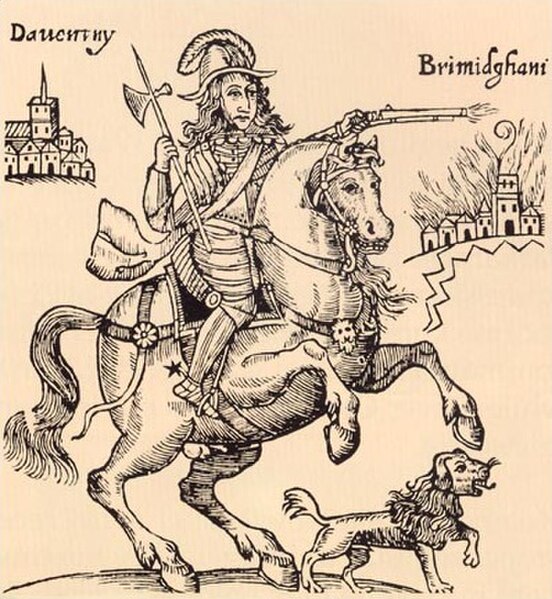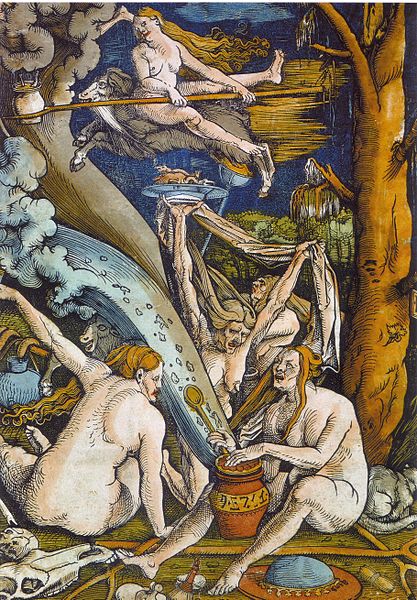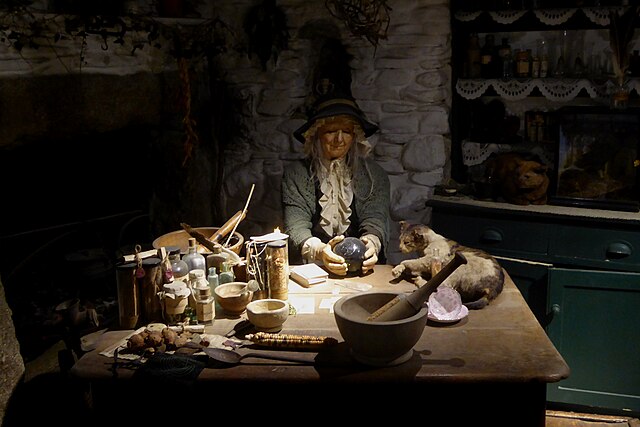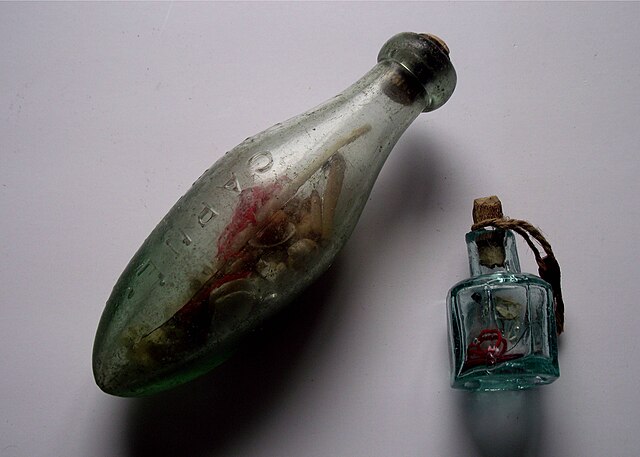In European folklore of the medieval and early modern periods, familiars were believed to be supernatural entities, interdimensional beings, or spiritual guardians that would protect or assist witches and cunning folk in their practice of magic, divination and spiritual insight. According to records of the time, those alleging to have had contact with familiar spirits reported that they could manifest as numerous forms, usually as an animal, but sometimes as a human or humanoid figure, and were described as "clearly defined, three-dimensional... forms, vivid with colour and animated with movement and sound", as opposed to descriptions of ghosts with their "smoky, undefined form[s]".
A late-16th-century English illustration of a witch feeding her familiars
A story of "a priest who for the space of 40 years employed a familiar spirit", illustrated in Elizabeth I of England's copy of the Histoires Prodigieuses by Pierre Boaistuau
Prince Rupert and his "familiar" dog in a pamphlet titled "The Cruel Practices of Prince Rupert" (1643)
The Love Potion by Evelyn De Morgan, 1903: a witch with a black cat familiar at her feet
Witchcraft, as most commonly understood in both historical and present-day communities, is the use of alleged supernatural powers of magic. A witch is a practitioner of witchcraft. Traditionally, "witchcraft" means the use of magic or supernatural powers to inflict harm or misfortune on others, and this remains the most common and widespread meaning. According to Encyclopedia Britannica, "Witchcraft thus defined exists more in the imagination of contemporaries than in any objective reality. Yet this stereotype has a long history and has constituted for many cultures a viable explanation of evil in the world". The belief in witchcraft has been found in a great number of societies worldwide. Anthropologists have applied the English term "witchcraft" to similar beliefs in occult practices in many different cultures, and societies that have adopted the English language have often internalised the term.
The Witches by Hans Baldung (woodcut), 1508
Preparation for the Witches' Sabbath by David Teniers the Younger. It shows a witch brewing a potion overlooked by her familiar spirit or a demon; items on the floor for casting a spell; and another witch reading from a grimoire while anointing the buttocks of a young witch about to fly upon an inverted besom.
Diorama of a cunning woman or wise woman in the Museum of Witchcraft and Magic
A witch bottle, used as counter-magic against witchcraft








